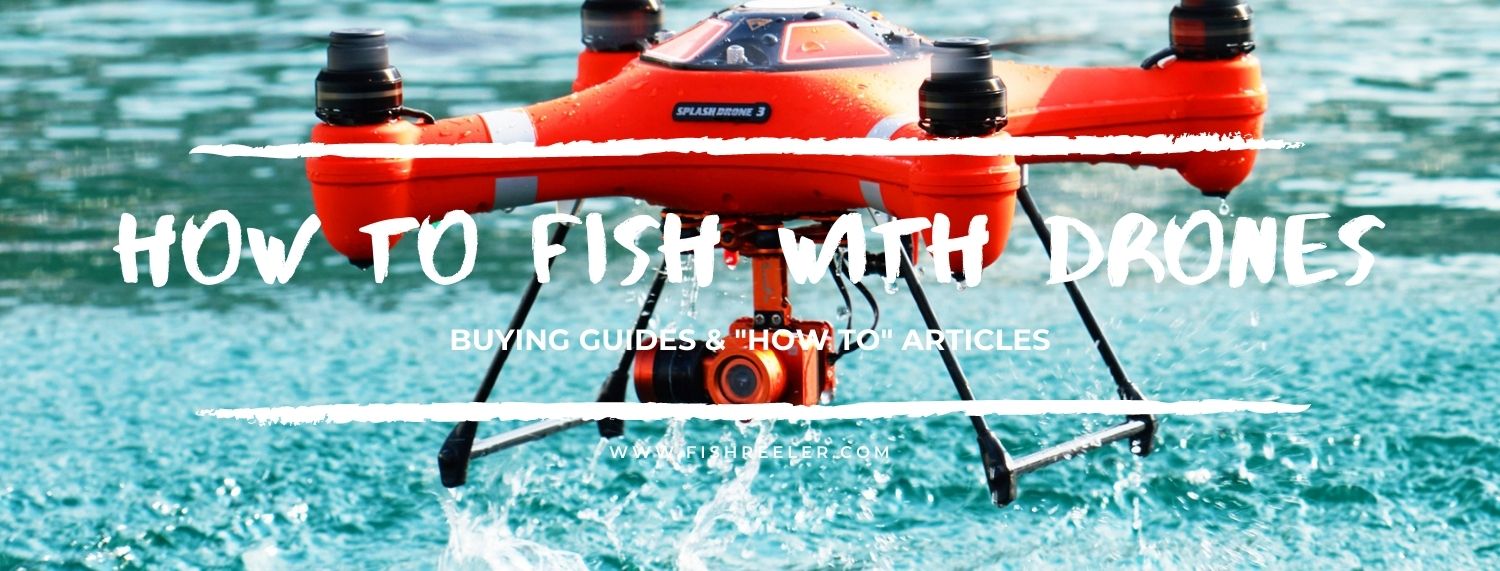
🧿The newest type of fishing is a drone! It is difficult to throw a bait (lure) from the shore at 200-700 meters. It is even more difficult to see a cluster of fish, and where to throw your fishing tackle. You need a reliable drone that will not fall into the sea and a device that will release the bait into the ocean. Read the article on how to do it without problems.
How to Fish with a Drone: A Comprehensive Guide
Soaring to New Heights: An Intro to Drone Fishing
As technology continues to evolve, innovative methods for traditional hobbies have begun to emerge. One such advancement is drone fishing, a cutting-edge approach to angling that integrates modern drone technology. The concept is simple: use a drone to carry your bait out to hard-to-reach fishing spots, and then release the line when you’re in a perfect position. This relatively new technique is gaining popularity among anglers who are eager to explore its potential and experience the thrill of fishing from a new perspective.
Sky’s the Limit: Advantages of Fishing with Drones
Drone fishing offers several benefits and advantages over traditional fishing methods, making it an attractive option for both seasoned anglers and newcomers alike.
| Benefits of Drone Fishing | Explanations |
|---|---|
| Accessibility | Drones can access areas difficult to reach with traditional casts, flying over obstacles such as rocks, coral reefs, and vegetation. |
| Fish Finder | High-resolution cameras on drones can scout the area and locate schools of fish, providing valuable information on where to cast your line. |
| Precision | Drones offer greater control over bait positioning, allowing you to release the line at the perfect moment for optimal placement. |
| Extended Range | Drone fishing expands your casting range beyond the limitations of traditional methods, enabling you to cover more water and find productive fishing spots. |
| Conservation | Drone fishing can reduce the environmental impact of traditional fishing methods by avoiding sensitive ecosystems and precisely targeting desired species. |
| Excitement | Fishing with drones adds an exhilarating and futuristic twist to the age-old hobby, offering a unique experience for enthusiasts of all skill levels. |
Gear Galore: Essential Equipment for Drone Fishing Enthusiasts
Reeling in Victory: Ideal Rod and Reel Setups
The right fishing rod and reel setup are crucial for successful drone fishing. Opt for a robust, medium to heavy action rod that can handle the weight and force of casting with a drone. Ensure that the reel has a high line capacity, as you may need more lines than in traditional fishing scenarios. Braided fishing lines are recommended due to their strength, low stretch, and resistance to abrasion.
Sky-High Release: Drone Fishing Line Release Mechanisms
🔵A reliable line release mechanism is essential for efficient drone fishing. There are several options available:
- Manual release clips: These devices attach the fishing line to the drone and release it manually when the desired location is reached. They are affordable and straightforward but require good timing for effective release.
- Electronic release mechanisms: These devices use a servo motor or electromagnet to release the line remotely, offering more control and precision. They may be controlled via the drone’s remote or a separate device.
- Purpose-built drone attachments: Some drones are designed with built-in release mechanisms specifically for fishing, providing a seamless and easy-to-use solution.
Luring From Above: Baits and Lures for Drone Fishing
The type of bait or lure you choose for drone fishing will depend on the species you’re targeting and the local fishing conditions. Live bait, cut bait, and artificial lures can all be used effectively with drones. It’s important to ensure that your chosen bait or lure doesn’t exceed the drone’s payload capacity and can be carried securely during flight.
Accessory Airtime: Must-Have Drone Fishing Add-Ons
🔵To ensure a smooth and enjoyable drone fishing experience, consider investing in the following accessories:
- Protective Case: A durable, waterproof case will protect your drone during transport and storage. Look for cases designed for your specific drone model, with compartments for spare batteries, propellers, and other accessories.
- Spare Batteries: Extended fishing sessions may require more than one battery. Having spare batteries on hand will prevent interruptions in your fishing experience.
- Extra Propellers: Accidents happen, and propellers are often the first components to break. Carrying extra propellers ensures you can quickly replace any damaged parts and continue fishing without delay.
With the right fishing equipment, line release mechanisms, baits, and accessories, you’ll be well-equipped for a successful and enjoyable drone fishing experience. Remember to consider your specific needs, the local fishing conditions, and the capabilities of your chosen drone when selecting your gear.
Rules of the Sky: Legal and Safety Considerations
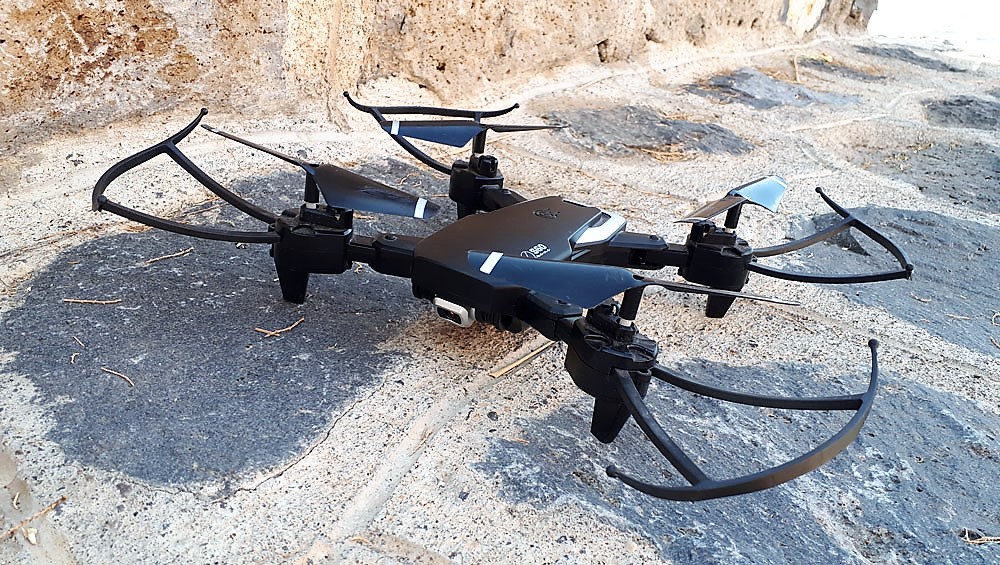
Navigating the Legal Landscape: Local Drone Regulations
Before embarking on your drone fishing adventures, familiarize yourself with local drone regulations, as they may vary by region, state, or country. Laws may govern where you can fly, how high, and how close to people or structures. Additionally, some areas may require permits or have specific fishing regulations. Research your intended fishing location to ensure compliance with all relevant rules.
Registry Ready: Registering Your Drone
In some countries, like the United States, you may need to register your drone with the appropriate aviation authority (such as the FAA) if it meets specific weight requirements. Registering your drone typically involves providing your personal information, the drone’s make, and model, and paying a nominal fee. Keep your registration details and proof of payment accessible during your drone fishing sessions to avoid potential issues with authorities.
Avoiding No-Fly Zones: Drone Fishing Safety First
Certain areas may be designated as no-fly zones, restricting drone usage due to safety or privacy concerns. These zones can include airports, military installations, national parks, or densely populated areas. Many drones come with built-in GPS features that automatically prevent them from entering no-fly zones. Familiarize yourself with the no-fly zones in your intended fishing location, and always respect these restrictions.
Drone Etiquette: Safety Guidelines for the Skies
🔵Following safety guidelines while operating a drone is essential for a responsible and enjoyable drone fishing experience. Some essential safety tips include:
- Always maintain a visual line of sight with your drone.
- Keep a safe distance from people, animals, and structures.
- Do not fly in adverse weather conditions, such as high winds or heavy rain.
- Monitor your drone’s battery life and land it safely before the battery runs out.
- Follow the manufacturer’s guidelines for safe drone operation.
Water Wise: Mastering Drone Flight Near Aquatic Environments
🔵Drone fishing presents unique challenges when flying near water. Consider these tips to avoid potential hazards:
- Take off and land on a stable, flat surface away from the water’s edge.
- Calibrate your drone’s compass and GPS system before each flight to ensure accurate positioning.
- Fly at a safe altitude above the water to prevent accidental collisions or splashes.
- Be prepared for sudden gusts of wind and adjust your flight path accordingly.
- If using a non-waterproof drone, consider investing in a flotation device to prevent loss in case of an emergency water landing.
By adhering to local regulations, registering your drone, understanding no-fly zones, and following safety guidelines, you can enjoy a responsible and enjoyable drone fishing experience. Always prioritize safety, both for yourself and those around you, while respecting the environment and other users of the waterways.
Which drone is best for fishing?
The best drone for fishing will depend on your specific needs, budget, and preferences. For myself, I can recommend a few options that have been popular with anglers, but note that newer models may have been released since then:
| Drone Model | Key Features | Best For |
|---|---|---|
| DJI Phantom 4 RTK | Stability, reliability, advanced features, high-resolution camera, precise positioning, excellent flight performance | Scouting fishing spots from a distance |
| Autel Robotics EVO II | 40-minute flight time, 5.5-mile range, 8K camera | Spotting fish schools or ideal fishing locations |
| SwellPro SplashDrone 4 | Waterproof, able to land and take off from the water’s surface, payload release system | Drone fishing, carrying bait and dropping it at the desired location |
| PowerVision PowerRay | Underwater drone, 4K camera, able to dive up to 98 feet | Scouting underwater depths, searching for fish in hard-to-reach places, providing real-time fish information |
Before purchasing a drone for fishing, consider factors such as flight time, camera quality, range, and any specific features you may need. Always check for updated models, as drone technology is constantly evolving.
Sky Fishing Strategies: Mastering Drone Fishing Techniques
Aerial Recon: Locating Fish with Your Drone
One of the key benefits of drone fishing is the ability to scout and locate fish from an aerial perspective. By utilizing your drone’s high-resolution camera, you can identify promising fishing spots, such as schools of fish, underwater structures, or drop-offs. Fly your drone at a safe altitude above the water and slowly survey the area, recording video or taking photos to review later. Keep an eye on your drone’s battery life to ensure a safe return and landing.
Dropping Bait: Efficient Bait Deployment via Drone
Drones enable accurate and efficient bait deployment to your chosen fishing spot. Attach your fishing line to the drone’s release mechanism and secure your bait or lure. Fly the drone to the desired location, carefully maintaining a steady altitude above the water. Once in position, use the release mechanism to drop your bait into the water. Monitor the line for any signs of a fish taking the bait.
Airborne Casting and Retrieving the Line
Casting with a drone offers increased distance and accuracy compared to traditional fishing methods. Fly the drone away from your location, paying out the fishing line as you go. Once you’ve reached the desired distance, release the line, and allow it to settle. Retrieve the line by reeling in as you would with traditional fishing methods or by flying the drone back toward you while maintaining tension on the line.
Keep an Eye in the Sky: Monitoring Your Fishing Progress
Your drone’s camera allows you to closely monitor your fishing process in real time. Keep an eye on the bait’s location, the movements of nearby fish, and any changes in the underwater environment. This information can help you make more informed decisions on when to reel in or adjust your bait’s position. Ensure that you maintain a visual line of sight with your drone while monitoring the fishing process.
Reeling Them In: Handling Fish Catches with Drones
When a fish takes your bait, the drone can assist in the early stages of the fight. As the fish pulls on the line, use the drone to maintain tension and fly in the opposite direction of the fish’s movement. Once the fish tires, retrieve the line using your fishing rod and reel, bringing the fish closer to shore or your boat. Avoid attempting to lift the fish out of the water with the drone, as this can be dangerous for both the fish and the drone.
By mastering these drone fishing techniques, you’ll be well on your way to enjoying a unique and innovative angling experience. Practice and patience are key to honing your skills and achieving success in the world of drone fishing.
Elevate Your Game: Tips and Tricks for Drone Fishing Success
Flight School: Mastering Drone Controls
Becoming proficient in drone flight and controls is crucial for successful drone fishing. Familiarize yourself with your drone’s various features, including altitude and speed adjustments, GPS functionality, and camera controls. Practice flying in open areas, away from obstacles, and gradually introduce more challenging elements, such as flying near water or carrying a fishing line. The more comfortable you are with your drone, the better your drone fishing experience will be.
Fair Weather Flying: Optimal Drone Fishing Conditions
Weather plays a significant role in your drone fishing success. Ideal conditions include calm winds, clear skies, and good visibility. High winds or rain can make it challenging to control your drone and may reduce its battery life. Monitor weather forecasts closely and plan your fishing trips during periods of favorable weather. Additionally, be prepared to adjust your plans if conditions change suddenly.
Maintenance Matters: Keep Your Gear in Top Shape
Regular maintenance of your drone and fishing equipment is essential for successful drone fishing. Inspect your drone for any signs of damage, such as cracks or loose parts, and clean it thoroughly after each use. Ensure your fishing rod and reel are in good working order, and replace any worn or damaged components. Properly store your equipment when not in use, and always carry spare parts, such as extra batteries, propellers, and a drone repair kit, during your fishing excursions.
Practice Makes Perfect: Patience Pays Off in Drone Fishing
Like any new skill, drone fishing requires practice and patience to achieve success. Be prepared for some trial and error as you learn to master the various techniques and equipment involved. Dedicate time to practicing your drone flying skills, familiarize yourself with your fishing gear, and be patient during the learning process. Remember that drone fishing is a unique and innovative approach to angling, so enjoy the experience and celebrate your progress along the way.
All You Need to Know Before Buying a Drone
A drone is not the cheapest investment for a fisherman. Therefore, before you start using it, you need to understand that you really need such a thing on the water as a drone and what it is for. In this article, we’ll talk about how you can best use drones when fishing, what accessories you can use with them, and the pros and cons of drone fishing. After reading my article, you will have decent baggage of useful information and will most likely be able to decide if you need a drone or not.
What Is Drone Fishing?
Let’s start with the basics. Drone fishing is a type of fishing where you use drones to scout water, cast line, or even fish with the drone itself. Drones can help you quickly explore a large surface of the water, find areas with large concentrations of fish, and cast much further than you can with your fishing rod.
Benefits of Using Drones for Fishing
Drones are very useful on the water and you can find thousands of uses for them. I have collected only the main advantages that a drone will give you after purchasing.
Fast and Broad Exploration
Drones are very handy and easy to use for reconnaissance. Almost every drone is equipped with an HD to 4K camera that you can use to scan the entire area below. As long as you follow the rules, you have no restrictions on exploring fishing spots throughout the water.
Fish often like to congregate near underwater structures. When fishing in shallow water, you can search such an area in minutes. This is very helpful when you are going to a new location for the first time. Alternatively, you can use the drone to detect currents or shoals of bait.
Unlimited Casting
In classic fishing with a rod and line, it is very difficult to cast more than 80 feet, even if you have a very good rod, reel, and a lot of experience behind you. With a drone, your casting will only be limited by the length of the line.
Whether you are surfing or trolling fishing, you will have many more options with a drone. The best part about using drones is that you lower the bait to exactly the point you want and which is rich in fish. Besides, many drones have a bait release mechanism that allows you to release the line exactly when you need it.
Drone Casting & Pulling
Drones are rarely used this way, but they are used nonetheless. Casting and pulling means your drone will not only drop the line but will also deliver the catch directly to your boat or shore. But this greatly reduces the number of fish that you can catch with your drone. Drones are not very lifting, so the fish that the drones can catch are also quite small. Applying this technique to a small lake can help you catch fish, but if you are going out into the ocean for a big catch, then a drone is unlikely to help you here.
Underwater Fishing
Only the latest drones designed specifically for diving can do this. These drones can submerge in any type of water, salty, fresh, very cold, or hot. They are often equipped with high-resolution underwater cameras, sonars, scanners, baits, and transducers of all types. But this is a slightly different type of drone that we will talk about another time.
Some Drone Limitations You May Encounter
As you can see, the benefits of drone fishing are enormous. But with the advent of new technologies, the government also keeps up with the issuance of new laws and restrictions. And while many states have already banned or restricted the use of drones for fishing, many states have yet to do so.
Many states and regions define the word “drone” differently. Most states recognize drones to be as flying as airplanes. So far, the adjustments do not apply to underwater drones, but it is only a matter of time.
Current federal regulations state that drones cannot fly over federal buildings and cannot fly over people. Also, drones must weigh less than 55 pounds and fly below 400 feet and have a line of sight. Of course, these restrictions can be tougher or softer. It all depends on your specific state or region where you live. So I recommend that you clarify this in the legislation of your region.
Do You Need A License After Purchasing A Drone?
According to federal law dated January 3, 2018, an amateur drone pilot must register the drone with the FAA, mark the hull with a registration number, and carry proof of registration when using the drone. On the FAA website, you can read a complete list of restrictions and recommendations for using drones.
Besides, the FAA has an online drone registration system for your convenience. You don’t need to travel to the FAA office to register your drone, you can do it right at home from your computer or phone.
What You Need to Rig Your Drone for Fishing?
Before setting up your drone for fishing, I recommend you first decide what you will be using it for. If you are only going to scout with a drone and cast and pull yourself, then there is no need to buy or make a release mechanism for the drone, but it is better to think about a good camera and sensors.
But if like most anglers, you want to cast and scout with a drone, then you will need not only the drone itself but also various bait releases to help you drop the line. You can also make your own bait release. Here are some videos to help you understand how to rig your drone.
Drone Fishing Gone Wrong
Mavic Mini | How to Fly Mavic Mini
TOP 5 Best Fishing Drones
Buying a Drone – Top 5 DJI Drones Review
Now I have prepared for you a review of the 5 best drones from DJI. It is one of the best and most trusted drone companies. They produce drones for all tastes: from compact Mavics to professional Inspire drones.
1# DJI Mavic Air 2 Fishing Drone – Editor’s Choice
DJI Mavic Air 2 gives you a great view of the water with a 48MP camera and the ability to shoot at 60 frames per second. Besides, the drone is capable of flying a full 34 minutes on a single battery and has very quiet blades that will not scare the fish even if you fly very close to the water. This makes it one of the best fishing drones.
It has an excellent camera capable of shooting in 4K with a 0.5-inch sensor, 3-axis stabilizer, and a quality image sensor. You can not only take high-quality 48MP photos but also shoot video in 1080p or video in 8K with the hyper task.
The maximum flight speed of this drone is 42.5 mph and the video transmission distance is 10 km, which is a lot for such a small drone.
2# DJI Mavic Mini Combo – Drone With No Register
If you are looking for a more compact fishing drone that fits easily into your backpack, then the Mavic Mini kit is the answer. It’s compact yet incredibly durable and handles lightweight well.
The nicest thing about it is that you don’t need to register it as it weighs less than 0.5lb/250g and these drones don’t need to register with the FAA.
It has some of the best features. Including a 4K camera, obstacle avoidance sensors, 30 minute flight time, return home function, and more.
3# DJI Phantom 3 Pro – Best For Beginners
The DJI Phantom 3 Pro is well built, easy to set up, and easy to use. This is beauty combined with excellent performance. You can set it up and fly it very easily, even if this is your first drone. It even has a beginner mode that lets you learn to fly in a safe, restricted area.
4# DJI Inspire 2 – Best for Professionals
This is one of the best drones for professionals with a very wide range of features and quality designs. It accelerates to 80 km/h in just 5 seconds, has a top speed of 94 km/h and a sink rate of 9 m/s. These are incredibly high numbers for a drone of this size and build.
The two-battery system allows the DJI Inspire 2 to fly for up to 27 minutes, and the self-heating technology allows it to fly in even the coldest temperatures.
It has an obstacle avoidance system and several intelligent flight modes including Spotlight Pro. This mode is one of the most exciting and allows you to take very beautiful shots on your own.
The video transmission system is capable of transmitting video directly from the main and onboard cameras for better water control.
5# DJI FPV Combo – Best Value for Money
Extremely fast even in normal mode, excellent FPV drone with crystal clear image and video transmission straight to your goggles. In Sport mode, this drone accelerates to 62 mph. Only the flagship Inspire 2 can match it, and it’s incredibly fast.
The flight time here is 12 minutes for each battery, for 3 batteries it’s 36 minutes. But this is if you fly in sport mode and at full speed.
The glasses are also incredibly high quality. No interference occurs even 6,000 feet or more from your position. With this FPV set, you’ll get very clear images and epic flying over water.
Top 4 Best Accessories for Drone for Successful Fishing
🔵Some Tools You May Need With Your Drone
For drone fishing, you may need more than just drones. If you want to attach the line to your drone and do long and accurate casts, then you will need some more tools. Below I have provided a list of the top 4 tools that I think every drone fisherman needs.
6# Gannet X Sport Pressure Release System – Easiest To Use Pick
With this release device, you don’t need any additional attachments or removal of the LED lens. You just install the mount in seconds and you can use it right away. Plus, it doesn’t interfere with your drone’s FPV sensors, so you can easily use your FPV system without interference.
You can choose electronic or mechanical release on this device. Electronic is much more convenient in my opinion, but it runs on a battery and requires periodic recharging via USB. Fortunately, the charge lasts for over 100 releases.
The release mechanism is designed for baits weighing about 800 grams. You can safely hang smaller weights, but heavier ones are not recommended.
7# Gannet X Drone Fishing Bait Release – Best Value for Money
Another great release device for all Phantom 3 and 4 drones. It is very easy to install and use, there is a mechanical and electronic release.
8# Gannet Sport Fishing Mechanical Bait Release – Best Budget Pick
This is a relatively budget but at the same time, a very high-quality bait release for your Phantom 3, 4, and even the old Phantom 2 drones. It is completely mechanical, so you don’t need any batteries, chargers, USB cables, etc. It is also the lightest model in the world. It weighs only 13 grams. The bait release is designed not to interfere with the cameras on your drone or the VPS sensors.
9# Gannet Sports Bait Release for Mavic 1 & 2 – Best Compact Pick
An excellent choice if you fly Mavic 1 and 2. This bait release from Gannet is very compact, cheap, and completely mechanical. It is made of a fairly durable material and does not require charging or batteries, while not interfering with your drone’s cameras and sensors.
Eco-Friendly Angling: Environmental and Ethical Drone Fishing
Treading Lightly: Reducing Wildlife Disturbance
While drone fishing offers many advantages, it’s essential to be mindful of its impact on wildlife. Keep a safe distance from birds and other animals when flying your drone, and avoid disturbing nesting sites or feeding areas. Operate your drone at a higher altitude or switch to quieter flight modes if available, to reduce noise pollution. By respecting the environment and minimizing disturbance to wildlife, you can enjoy drone fishing while preserving the natural beauty of our waterways.
Size Matters: Respecting Catch Limits and Restrictions
To ensure the sustainability of fish populations, always adhere to catch limits and size restrictions imposed by local authorities. Familiarize yourself with the rules and regulations for the specific fish species and water bodies you plan to fish. Use a fish measuring device to determine the size of your catch and release any fish that do not meet the legal requirements. By following these guidelines, you can enjoy drone fishing responsibly and contribute to preserving our valuable aquatic resources.
Gentle Giants: Catch-and-Release Best Practices
Catch-and-release fishing is an important conservation practice that helps maintain healthy fish populations. When drone fishing, consider releasing some or all of your catch, particularly when targeting vulnerable or threatened species. Use barbless hooks or circle hooks to minimize harm to the fish and handle the fish carefully during release. Wet your hands before touching the fish, minimize air exposure, and gently return it to the water. By practicing catch-and-release, you can enjoy drone fishing while promoting the conservation of our aquatic ecosystems.
Leave No Trace: Proper Waste and Debris Disposal
Ensuring a clean environment is crucial for the long-term sustainability of our waterways. Always dispose of any waste or debris properly, including discarded fishing lines, bait containers, and packaging materials. Consider bringing a small trash bag with you to collect waste during your fishing trip. Additionally, be mindful of potential pollution from your drone’s battery and other electronic components. Dispose of damaged batteries and electronic waste at designated recycling centers. By properly managing your waste, you can enjoy drone fishing while contributing to the preservation of our environment.
By incorporating these environmental and ethical considerations into your drone fishing practices, you can enjoy this innovative angling technique while contributing to the conservation of our precious aquatic resources. Be mindful of the impact of your activities on the environment, and always strive to minimize disturbances to wildlife and maintain the health of our waterways.
FAQs
While we have almost figured out what drone fishing is and how useful it is, there are still a few important points worth highlighting. I have compiled them into the most frequently asked questions section.
Always remember that drone fishing is an evolving activity, and staying informed about new techniques, technology, and best practices will help you become a more proficient and responsible drone angler.
The Future of Fishing: Conclusion
Skyward Bound: Embracing the Future of Fishing
In this guide, we’ve covered the essentials of drone fishing, from choosing the right drone and fishing equipment to mastering various techniques and safety considerations. By following the steps and advice provided, you can elevate your angling experience and explore the many benefits that drone fishing has to offer.
Fly Responsibly: Drones as Tools for Sustainable Anglingy
As you venture into the world of drone fishing, remember to approach this innovative technique with an eco-conscious mindset. By adhering to legal and safety guidelines, respecting wildlife, and practicing catch-and-release where appropriate, you can enjoy drone fishing while minimizing your impact on the environment.
Join the Conversation: Share Your Drone Fishing Experiences
We hope this guide has provided you with valuable insights and information on drone fishing. We invite you to share your own experiences, tips, and successes in the comments section below. Together, we can learn from one another and continue to advance the exciting world of drone fishing, ensuring it remains a sustainable and enjoyable activity for anglers everywhere.
Now it’s time to take to the skies and discover the unique thrill of drone fishing. Enjoy the journey, and tight lines!
Tags: #how to fish with drone / #how to catch more fish with drones / #drone fishing for beginners / #how to set up your drone fishing rig / #best drone for fishing / #fishing drone for sale

I live in Tenerife (Canary Islands) for the last 10+ years and share my daily fishing experiences on my website. Many years of personal experience as a fisherman and the vast experience of my friends allow me to write professionally on any fishing topics (from choosing a flashlight and equipment to deep-sea fishing).
All of my advice is based on practical real-world experience and will be useful to both novice anglers and professionals. Read more about the author.
Affiliate Disclosure: FishReeler.org sometimes gets paid for listings, through sponsors or affiliate programs like Amazon, Ebay, Cabelas, Bass Pro Shop, Shimano, Daiwa, Rapala, Renn, Okuma, KastKing, etс. Clicking a link helps keep FishReeler.org free, at no extra cost to you!
About the author: Each article is verified by the fishing expert Sergio Smirnoff. The articles are written by professional and amateur fishermen with 20+ years of fishing experience.
Note: The views and opinions expressed in this article are those of the authors and do not necessarily reflect the official policy or position of any agency. The articles are for informational purposes only, share your opinions in the comments and join the fishing discussions, let's share our fishing experiences together!

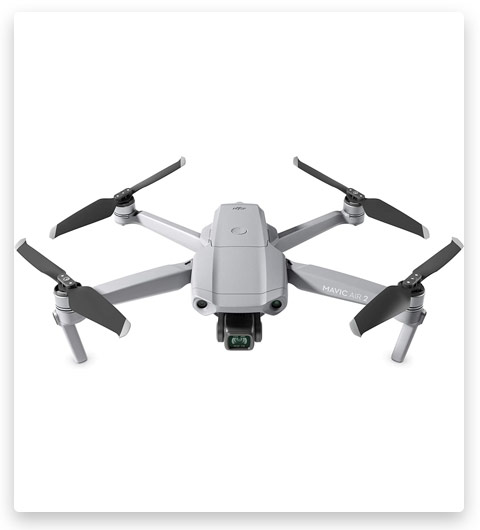
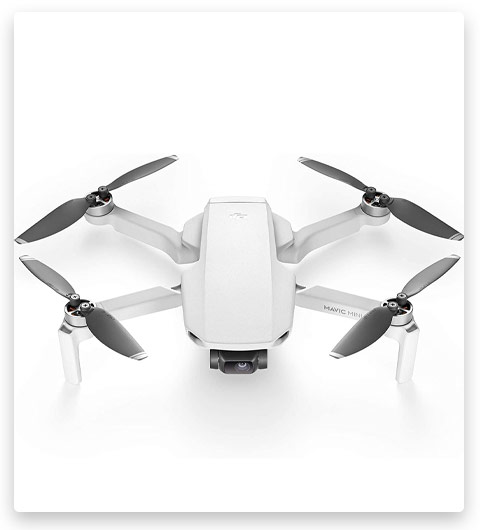
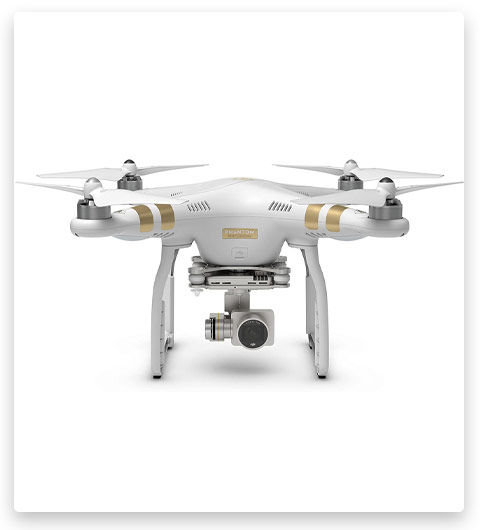
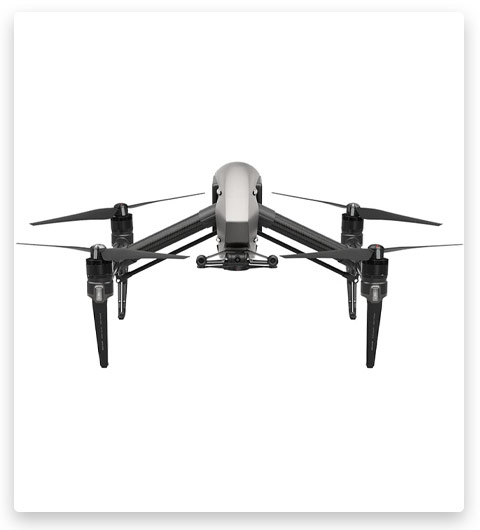
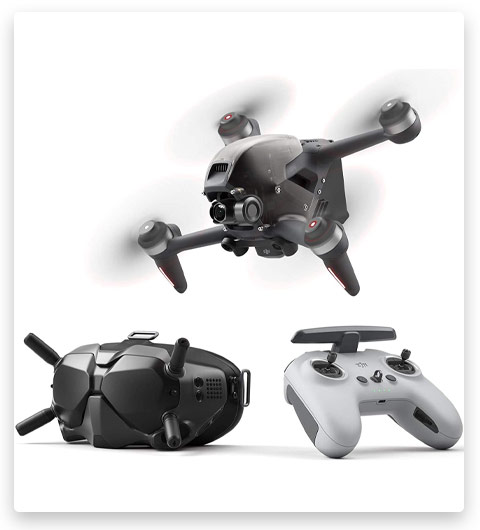

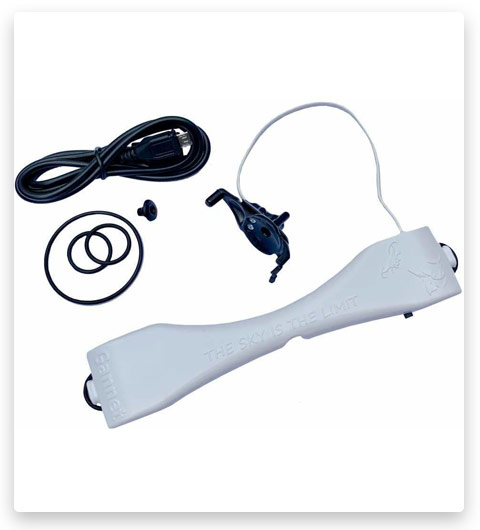
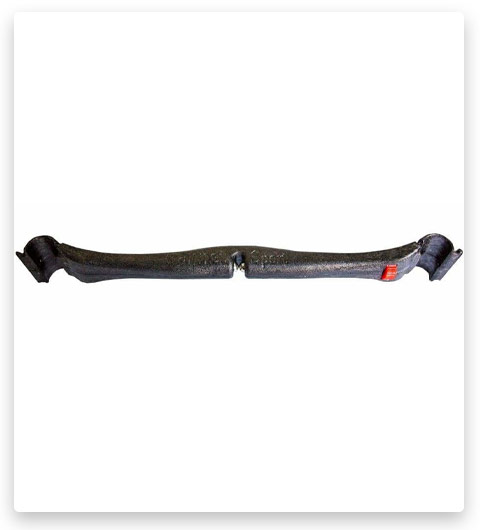
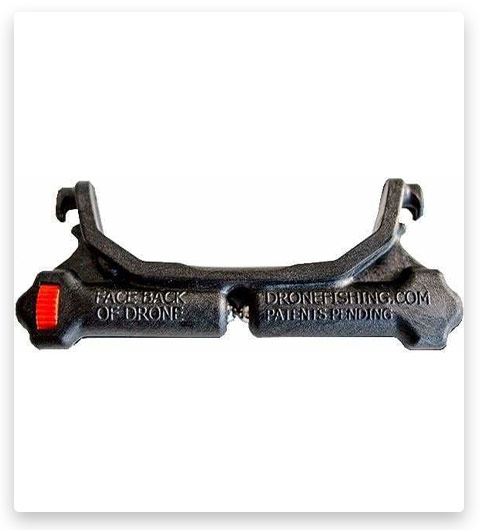
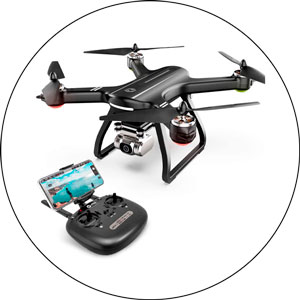
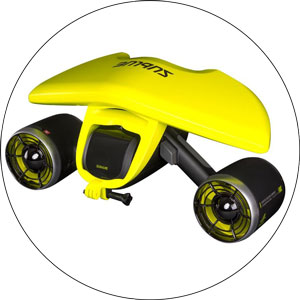
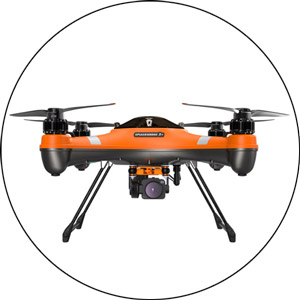
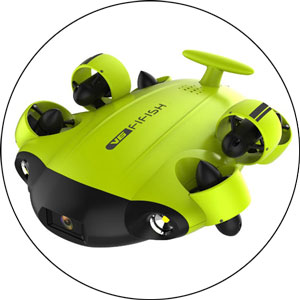
I recently managed to see a real drone fishing trip. The fisherman positioned himself on the pier, hooked live bait, lifted it all up on the drone, and threw it 300 meters. It was evening and 30 minutes later he caught a small tuna. We greedily waited and watched as the fisherman dragged the fish to shore. And at the end, there was applause from the people watching.
Professional article. Especially struck by the accessories for drones for successful fishing. I see the best drones are presented. Prices are high, but you have to pay for the controllability and operating time of the drone. Keep up with such publications.
You’re absolutely right; you don’t necessarily need an expensive release device for drone fishing. I’ve seen people use a simple straight “hook” made from a clothes hanger or stiff baling wire, which holds the rig when flying straight. To release the bait, just rotate the drone to face you, hold the line, and back the drone up, allowing the rig to slide off the hook. If anyone is interested, I can share a picture of my setup when I get home.
Before I invested in a $20 release device, I also used an outrigger setup that cost less than a dollar. While flying the drone out, I’d set the bail, and the tension would activate the outrigger, dropping the bait. It worked great, but I found the cheap balloon drop to be more precise.
It’s great to hear that you’re located on the Westcoast BC in Canada, where there’s excellent fishing! I understand that fishing from a boat can be expensive, especially with gas prices at $2.30 CA per liter. Creating a setup to take your line far out with a spoon and a small weight for salmon using a drone sounds like an interesting summer project. I agree that fishing in chest waders can be difficult due to the surf and currents.
Considering using a drone to drop off a meat line with a circle hook and some weight for halibut fishing is a creative idea! Since you already have some great halibut fishing spots on your GPS, researching drones to help you access those locations without going too far from the shore might be an excellent investment. Good luck with your research and project!
It’s great to hear that you have a DJI Phantom 3 and are planning to start drone fishing at the beach. It seems like you’re looking for an attachment that guarantees the release of your line or payload on command, rather than relying on the fish to take it (like the Sky Rigger). Having that additional feature would be a bonus, though! Hopefully, someone in the community can recommend a suitable attachment for your needs. Good luck with your drone fishing adventures!
It’s interesting to consider using a drone for fishing when the tuna are in a feeding frenzy, as boats can often be out of position, and there’s a small time window to get the bait in the water. DJI drones, especially their larger models, like the Mavic 2 line, could be suitable for this purpose due to their capabilities in handling weight and high winds at sea. However, they are on the more expensive side.
It’s essential to note that DJI drones should not be flown in the rain, as it can damage the camera, which would make it difficult to spot fish. So, one needs to be cautious when using them around water.
Battery life is another critical issue when using drones for fishing. A 20-minute battery life doesn’t necessarily mean 20 minutes of actual flight time. To be safe, especially over water, you should ideally bring the drone back with at least 10 minutes of battery remaining. Thus, a drone with a minimum of 30 minutes of battery life would be more practical for this purpose.
This article is a fantastic resource for beginners looking to get started with drone fishing! I appreciate the step-by-step guidance and the practical tips provided. I can’t wait to try this out on my next fishing trip!
I’ve been considering drone fishing for a while now, and this article has given me the confidence to give it a go! The instructions are clear, and the advice on choosing a drone is beneficial. Looking forward to experimenting with this technique and hopefully reeling in some big catches!
The comprehensive guide you’ve provided on how to fish with a drone is a game-changer for anglers! Your insights on drone selection, attachment options, and safety precautions make this an excellent resource for anyone interested in drone fishing. Thank you for sharing your expertise!
This article is a goldmine for anyone interested in combining their love for drones and fishing! Your thorough explanation of the process, along with the pros and cons of drone fishing, makes it easy for anyone to understand the steps involved. Kudos for such an informative piece!